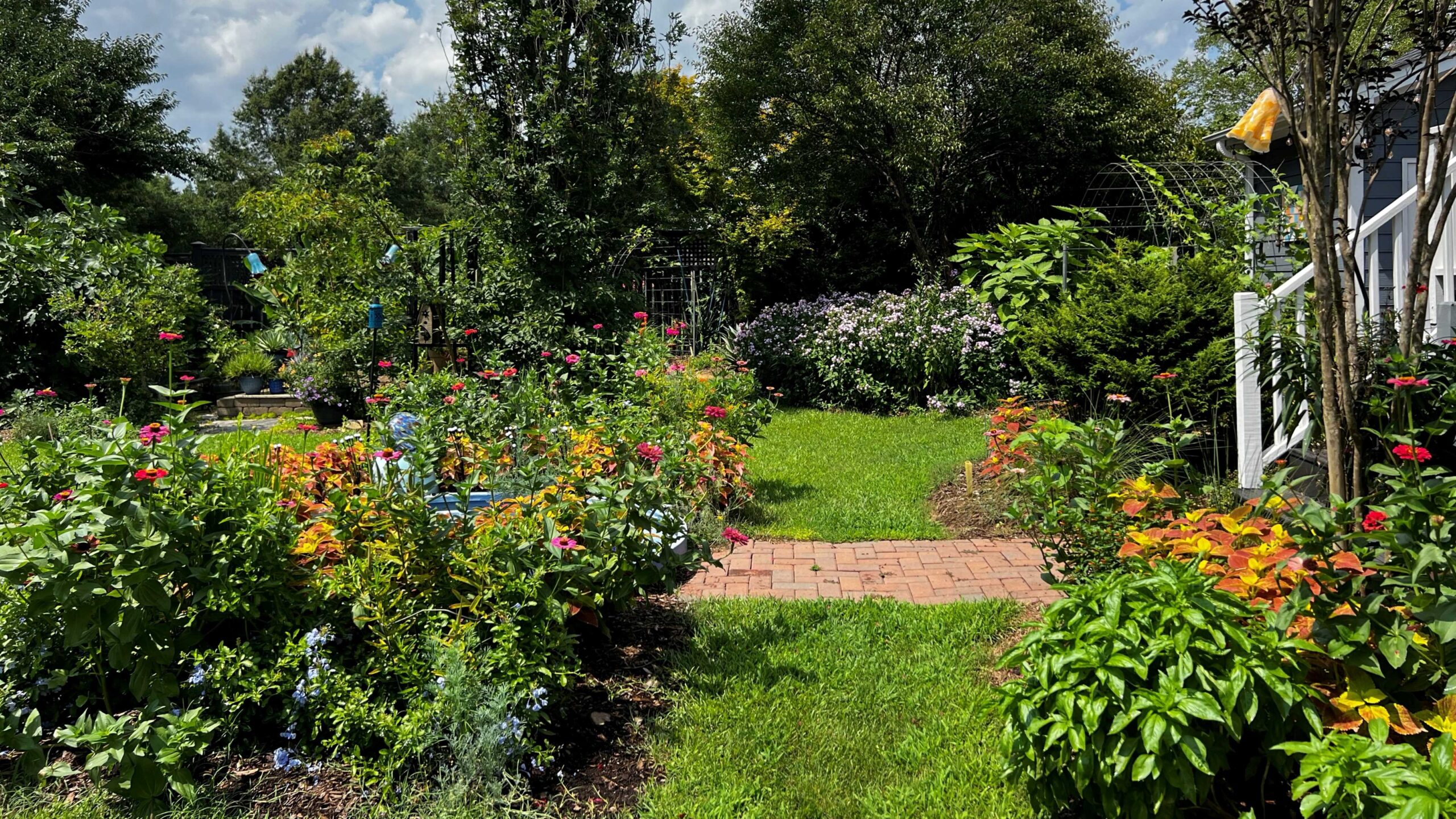Stephanie Mack, the yard buyer at Portland Nursery since 2003, was inspired by her grandparents’ vegetable garden when she was growing up.
“I remember there being garlic and onions planted in the ornamental beds and a sunflower hedge next to the driveway growing up,” Mack said. “In my own garden I love incorporating food crops into the landscape and in containers. I don’t love to eat eggplant, but their flowers are so pretty that I often add them to summer containers. I often tuck gorgeous lettuces into tight spots and use gold marjoram as a groundcover.”
This concept of incorporating edible plants into ornamentals is known as foodscaping.
Dealing with HOAs
Brie Arthur, a gardening expert and author, studied landscape design and horticulture at Purdue University. When she bought her first house that came with foundational landscape beds on the property, she began to grow vegetables and ran into difficulties with her new homeowners’ association.
“It was through that process of trying to avoid getting fined and not making my neighbors angry that I joined the HOA board,” Arthur said. “My argument was simple: If you integrate vegetables with ornamental plants like hydrangeas, camellias and daylilies, you can compensate for the seasonality of what vegetables provide.”
She began advocating for other individual gardeners too, becoming their representative and helping them navigate their own HOAs so they could grow vegetables mixed with ornamentals.
A natural fit for landscapes
Alanna Lambert said the nursery she manages, Durant at Red Ridge Farms in Dayton, has grown and sold lavender and herbs since opening over 20 years ago. The farm has leaned into carrying Pacific Northwest hardy olive trees the past several years.
“Foodscaping has come naturally just in the nature of the plants we offer,” Lambert said.
“I’ve always liked working in the garden growing my own crops, especially tomatoes,” said Henry Wilhoit, Farmington Gardens manager in Beaverton who is a third-generation filbert farmer. “During Covid I learned more about how to do it.”
He experimented with adding native shrubs into his vegetable garden.
Peter Eastman has been an avid gardener, including edibles, for 50 years, starting in his parents’ garden and then in his own. He is the tree and shrub buyer for Al’s Garden & Home in Woodburn.
“I personally have incorporated fruit trees, fruiting vines and edible shrubs into my landscapes along with having a dedicated ‘vegetable garden’ for food production,” he said.
Recommended plants
“Foodscaping is about taking advantage of the best plants of all categories and growing them together in a way that matches your lifestyle needs,” Arthur said. She recommends growing what you like to cook.
“Growing your own potatoes is a really easy process,” Arthur said. “If you grow them in containers, harvesting is much easier.” She suggested growing ten 7-gallon pots of potatoes, which will produce up to six months’ worth of potatoes.
“Garlic is another really easy crop to grow, and the advantage is that animals don’t like the smell. You can harvest a lot so you don’t have to buy it,” Arthur said. “Grow it along bed edges, because it’s not taking up space anyway. In a 10-foot long bed, you can grow enough garlic to have a clove a day for four months.”
Mack recommended growing heat-tolerant plants as a response to climate change.
“Figs and mulberries are low maintenance fruit trees that don’t mind the heat,” Mack said. “Artichokes are beautiful and very dramatic in a garden. Goumi berries have fragrant flowers and produce fruit that when ripe are sweet and yummy.”
She also suggested Sunshine Blue blueberry (Vaccinium ‘Sunshine Blue’ Southern Highbush), which is a small heat-resistant variety.
Wilhoit is a fan of growing herbs, including sage, oregano and bay laurel.
“Lavender and rosemary are great additions to any garden and they’re deer resistant and grow beautifully,” Wilhoit said. “You can get varieties that are low growing or a variety of creeping rosemary for a cascading effect.”
For families with small children, he suggested adding strawberries into a garden.
“It’s a good way to get them excited and pass on the love of gardening to a new generation,” Wilhoit said.
Edimentals
Lambert said she recommends using “edimentals,” or plants that are both edible and ornamental.
She listed some of her favorite edible landscape varieties with ornamental characteristics, including Negronne (Ficus carica ‘Negronne’) and Black Spanish (F.c. ‘Black Spanish’) figs; Picual (Olea europaea ‘Picual’), Boutellian (O.e. ‘Boutellian’) and Empeltre (O.e. ‘Empleltre’) olive trees; and blueberries like Vaccinium ‘Pink Lemonade’ and Cabernet Splash™ (Vaccinium corymbosum ‘VacBri1’). Lambert also suggested pomegranates Punica granatam ‘Wonderful’ and P.g. ‘Favorite.’
“Chilean guava [Ugni molinae] and pineapple guava [Feijoa sellowiana] are great options for shrubs and herbs that have interesting foliage and flowers like sage, thyme and oregano work well for any perennial needs in the landscape,” Lambert said. “It is always fun to eat your yard, isn’t it?”
Eastman said edible trees, shrubs and vines also add both beauty and a great food source. Modern fruit trees come in a variety of sizes to fit different sized landscapes.
Eastman said blueberries are the number one selling edible shrub, but he also recommended huckleberries, currant and gooseberries.
“Semi-dwarf trees grow larger and are great for someone looking for a large orchard and maximum production where space is not an issue,” Eastman said. “Dwarf trees work well in gardens where space is limited.”
“Caneberries like raspberries and blackberries can also be grown in the average garden but do need some additional requirements like wire trellising or other supports along with specific pruning, depending on the variety,” Eastman said.
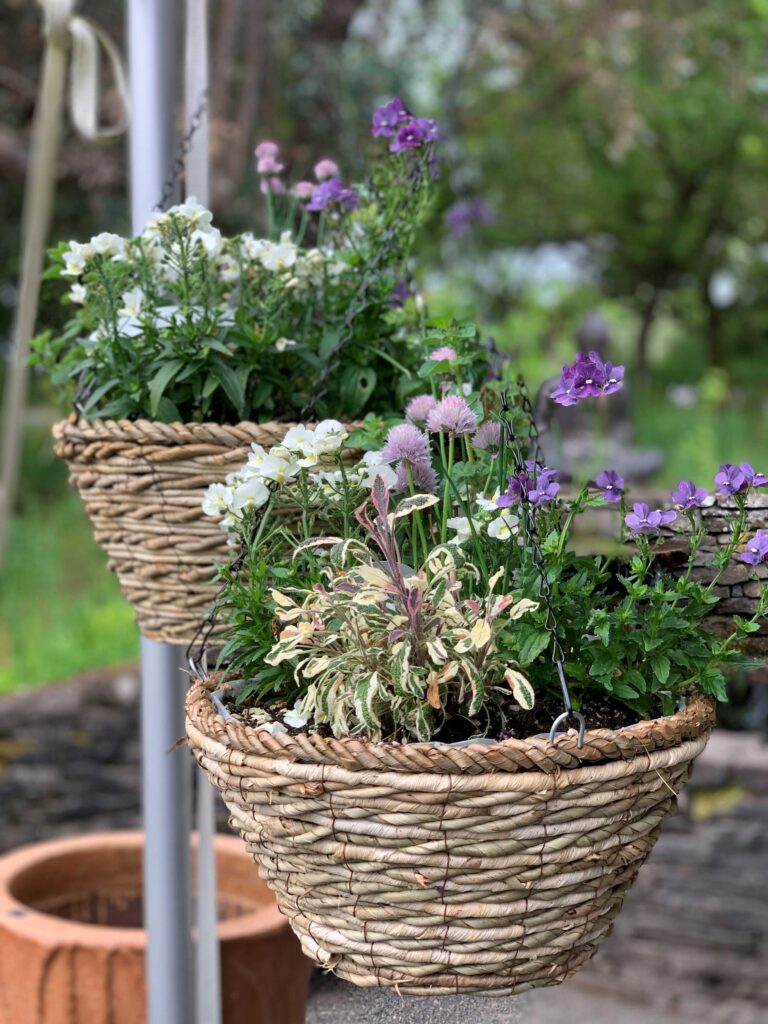
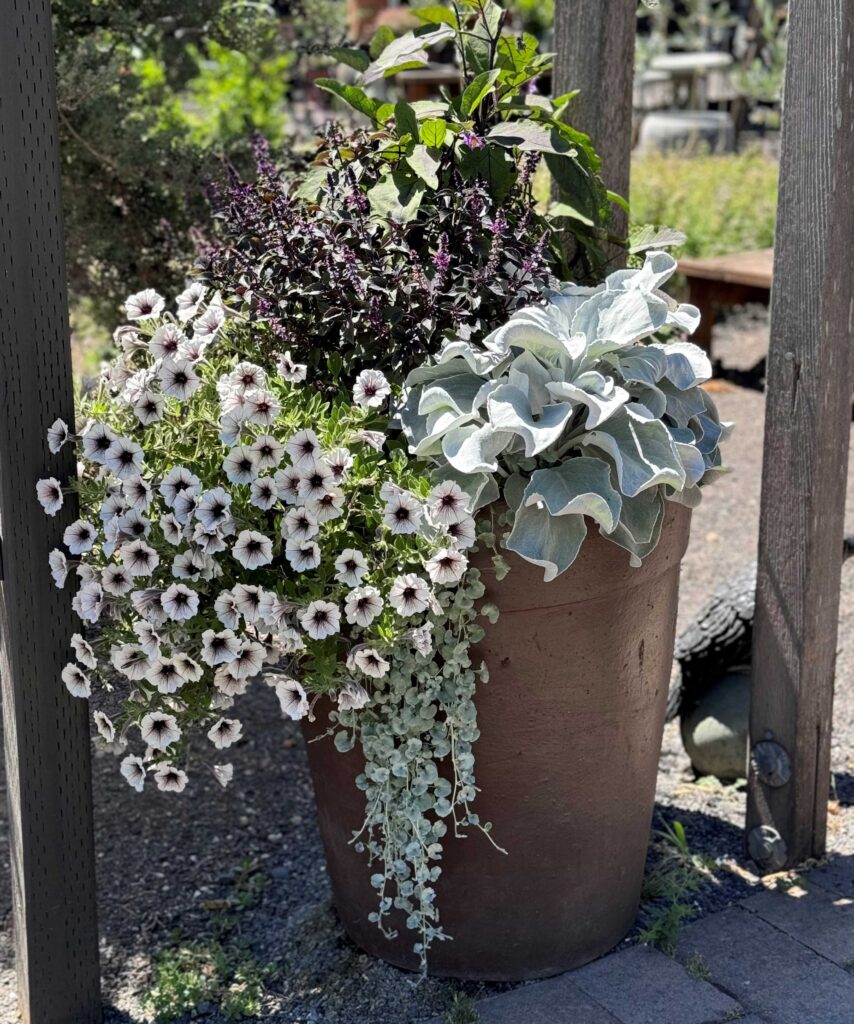
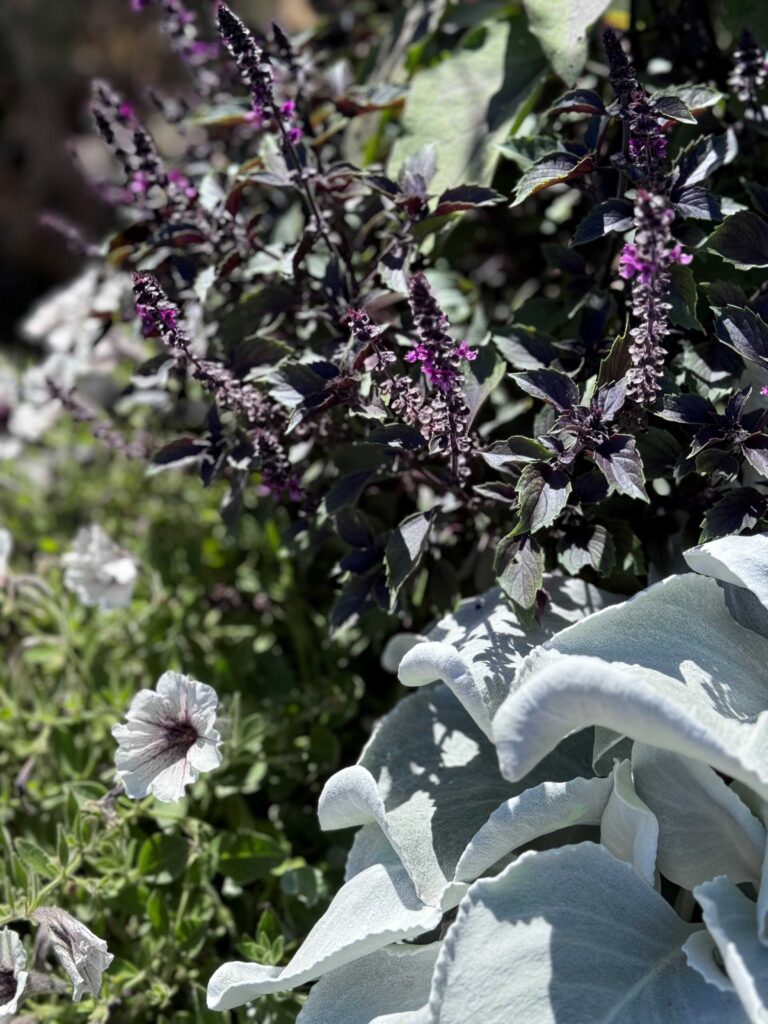
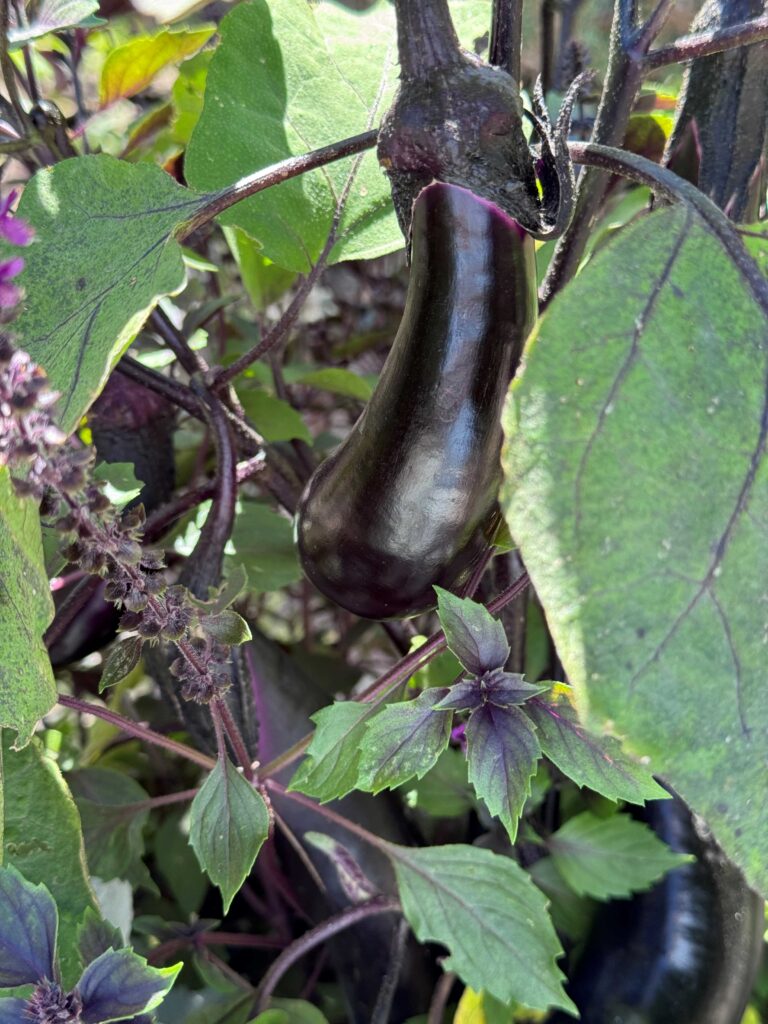
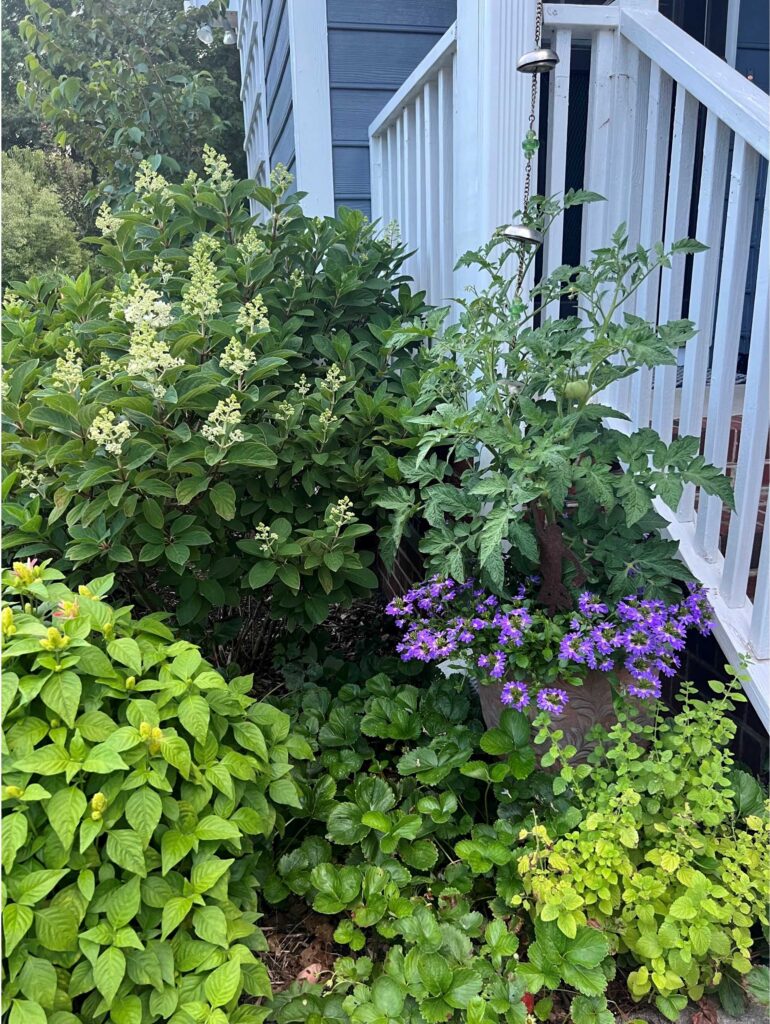

Advice
Arthur’s advice for setting up a foodscape is to first consider the site itself, including how much sunlight it gets and how accessible it is for watering and harvesting.
“There’s no such thing as a low maintenance vegetable or fruit,” Arthur said. “The point of growing food is that it is a more interactive hobby.”
Grouping plants together that like the same conditions is helpful too.
“When I add something I make sure it’s going into the right kind of soil and light and will work with the plant it’s next to,” Mack said. She chooses to place marjoram underneath shrubs next to her house and lettuce in full sun.
Mack likes to put plants in containers for more control of the soil and drainage compared to the clay-heavy soil that’s common in the Portland area.
Eastman recommended planting multi-grafted trees or combination Fruit trees that offer several different varieties of the same fruit on one tree.
“This not only increases production with better pollination but offers the homeowner several varieties to harvest from one tree,” Eastman said.
Compact gardens
The foodscaping concept works well in small home lot sizes or apartments that don’t have the space for a dedicated vegetable plot.
“The trend grew out of this conundrum of how to make the most of the space a person has, especially renters who aren’t able to control a yard in a way they would like to,” Mack said.
“Any amount of space you have, you can incorporate fruit and vegetables and take advantage of the square footage,” Arthur said. “And containers are the solution to absolutely everything.”
Fruit trees can be trained to grow in a flat two-dimensional pattern against a fence or wall in a growth habit known as espalier.
Wilhoit said espalier takes a bit of planning and it’s helpful to start the process on a younger plant.
“It’s better to start with a smaller plant because it’s easier to adapt to other conditions and less likely to fail,” Wilhoit said.
“So many herbs and vegetables have interesting colors in their foliage that can echo colors picked in ornamental floral choices in seasonal plantings,” Lambert said. “Thymes and sages with variegation can be used as edible foliage accents. Veggies like eggplant and some peppers are colorful themselves as well as have wonderful foliage. Many dwarf or ‘container’ veggie options are available on the market and more seem to become available every year.”
Lambert said people with limited growing space can also use hanging baskets.
Dwarf varieties to go in smaller yards or containers include ‘Fignominal’ fig (Ficus carica ‘Fignomenal’), ‘Top Hat’ blueberry (Vaccinium angustifolium) and ‘Parfianka’ pomegranate (Punica granatum ‘Parfianka’).
Eastman added there are dwarf blueberries, figs, raspberries and blackberries, including a dwarf series from Bushel & Berry that are bred to grow in containers.
“One of the coolest new trends is growing super dwarf or ‘genetic dwarf’ fruit trees,” Eastman said. Apples, cherries, nectarines and peaches all come in these super dwarf varieties.
The most important thing, Mack said, is to enjoy the experience and experimentation of foodscaping. “I think growing food is really rewarding and everyone who can should try it.”
It’s a great way to get into gardening, Wilhoit said. Plus “when times are tougher, if you know how to grow food and take care of yourself, you’re one step ahead.”

